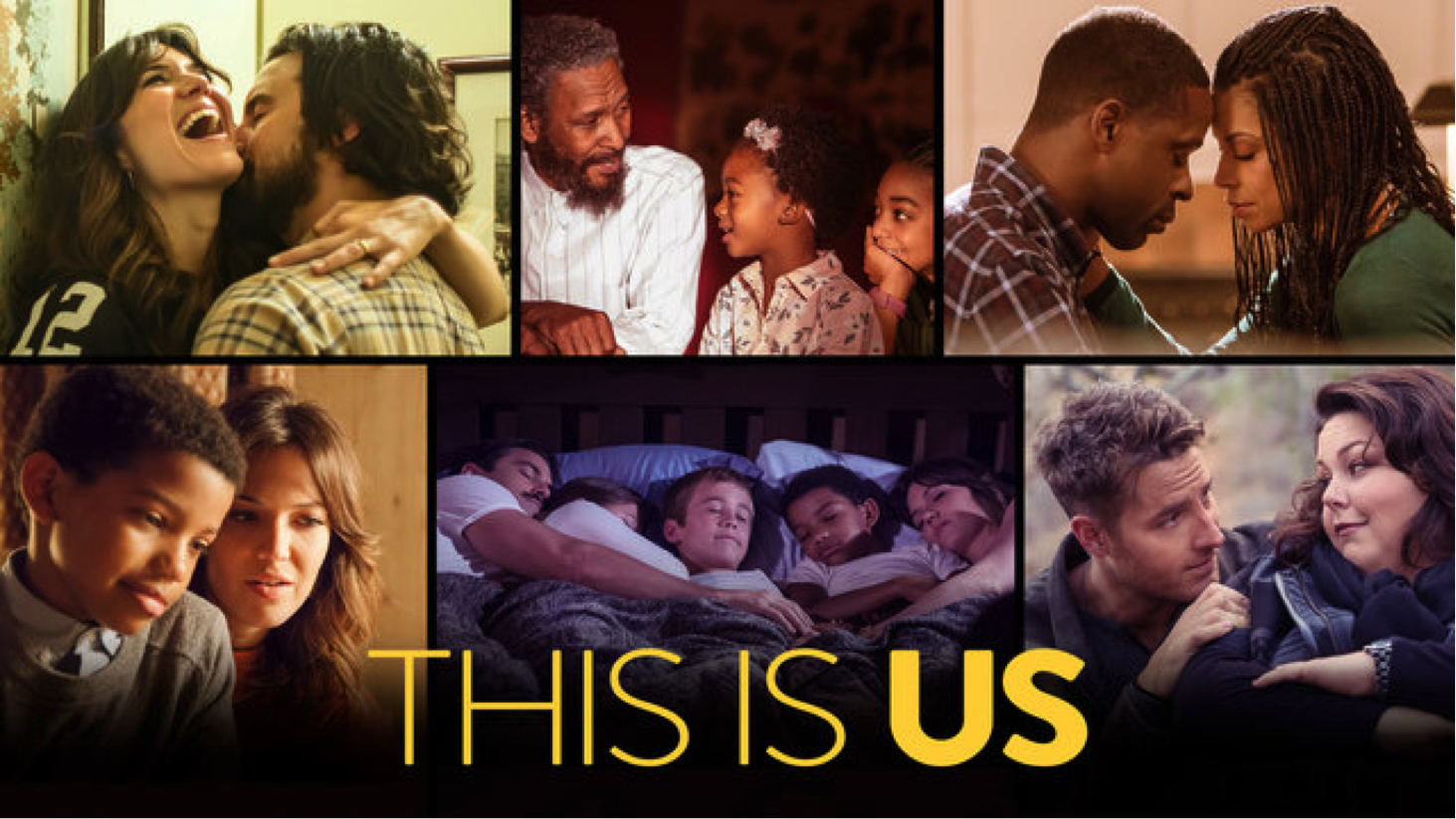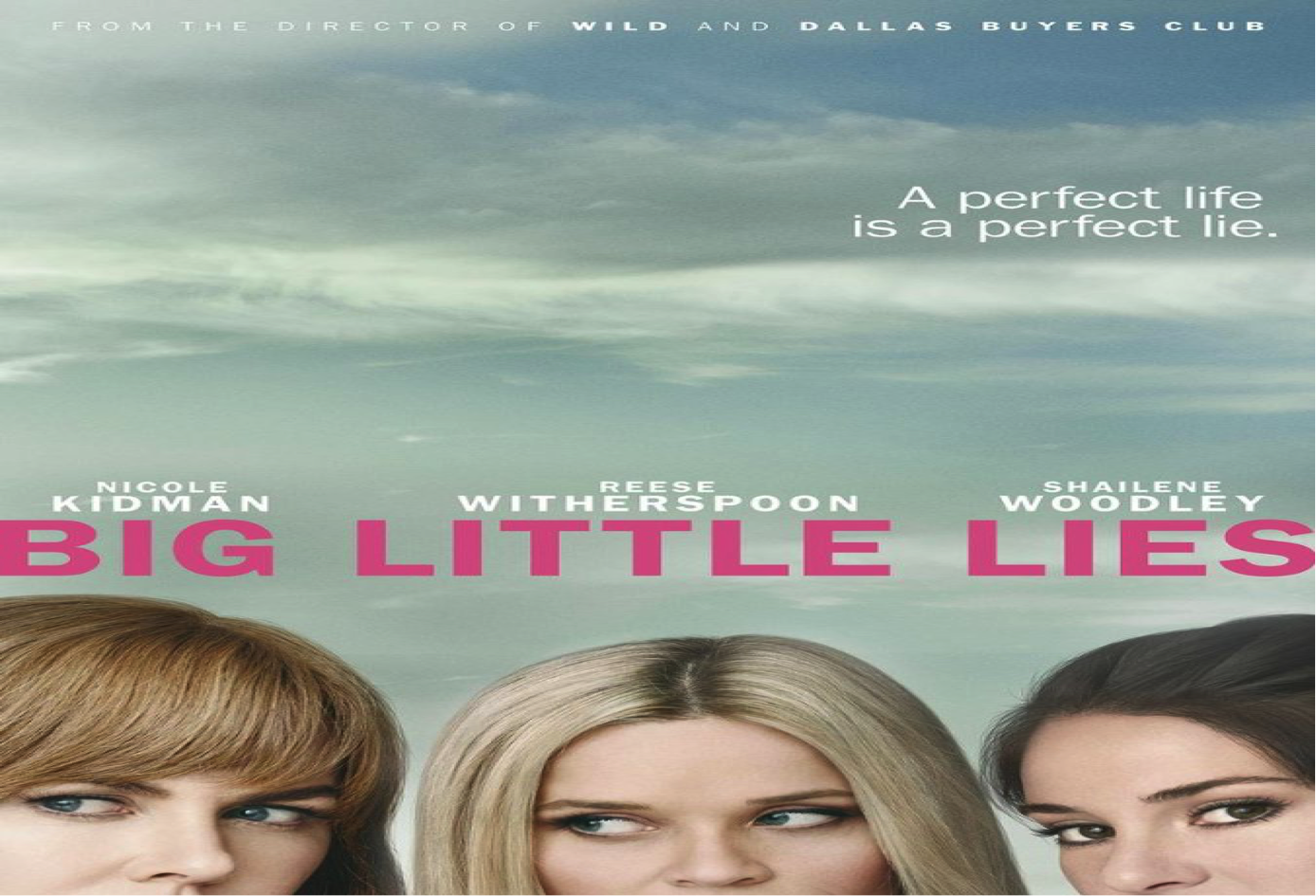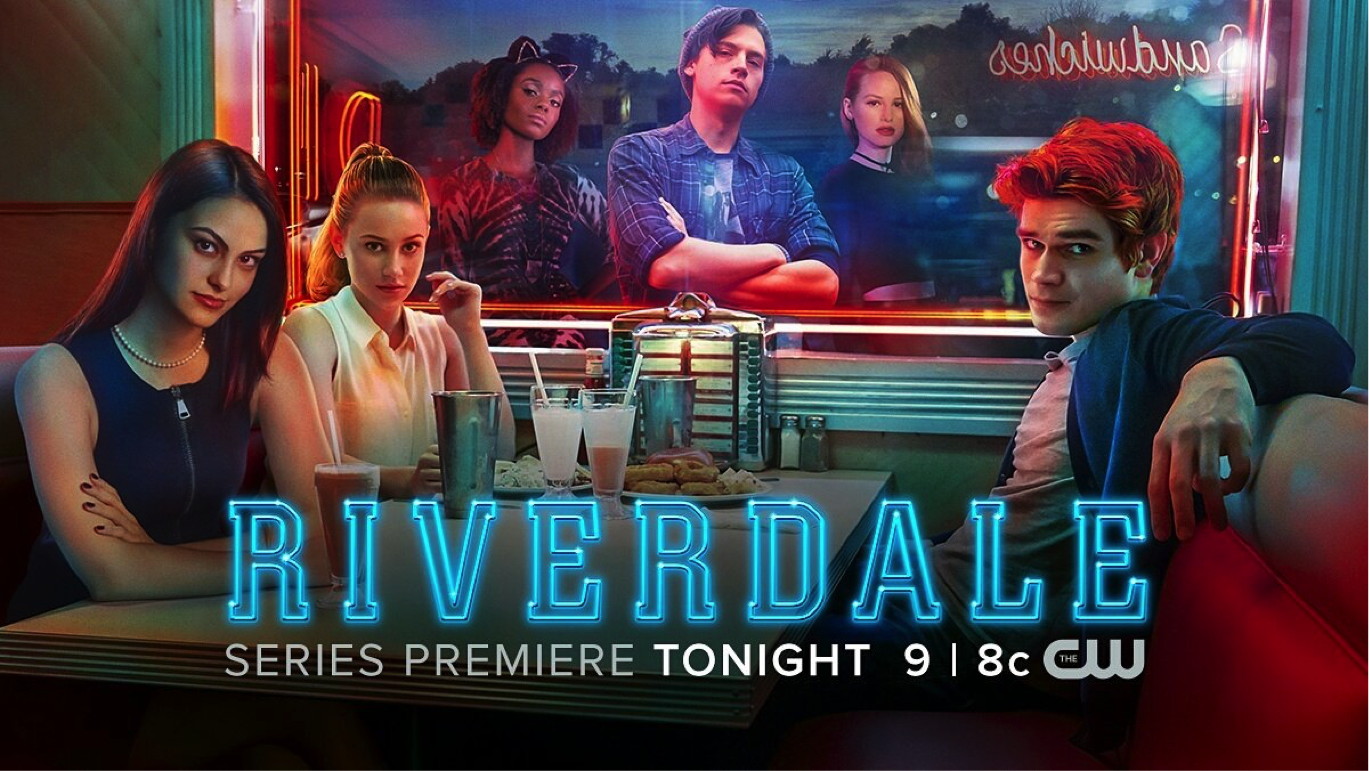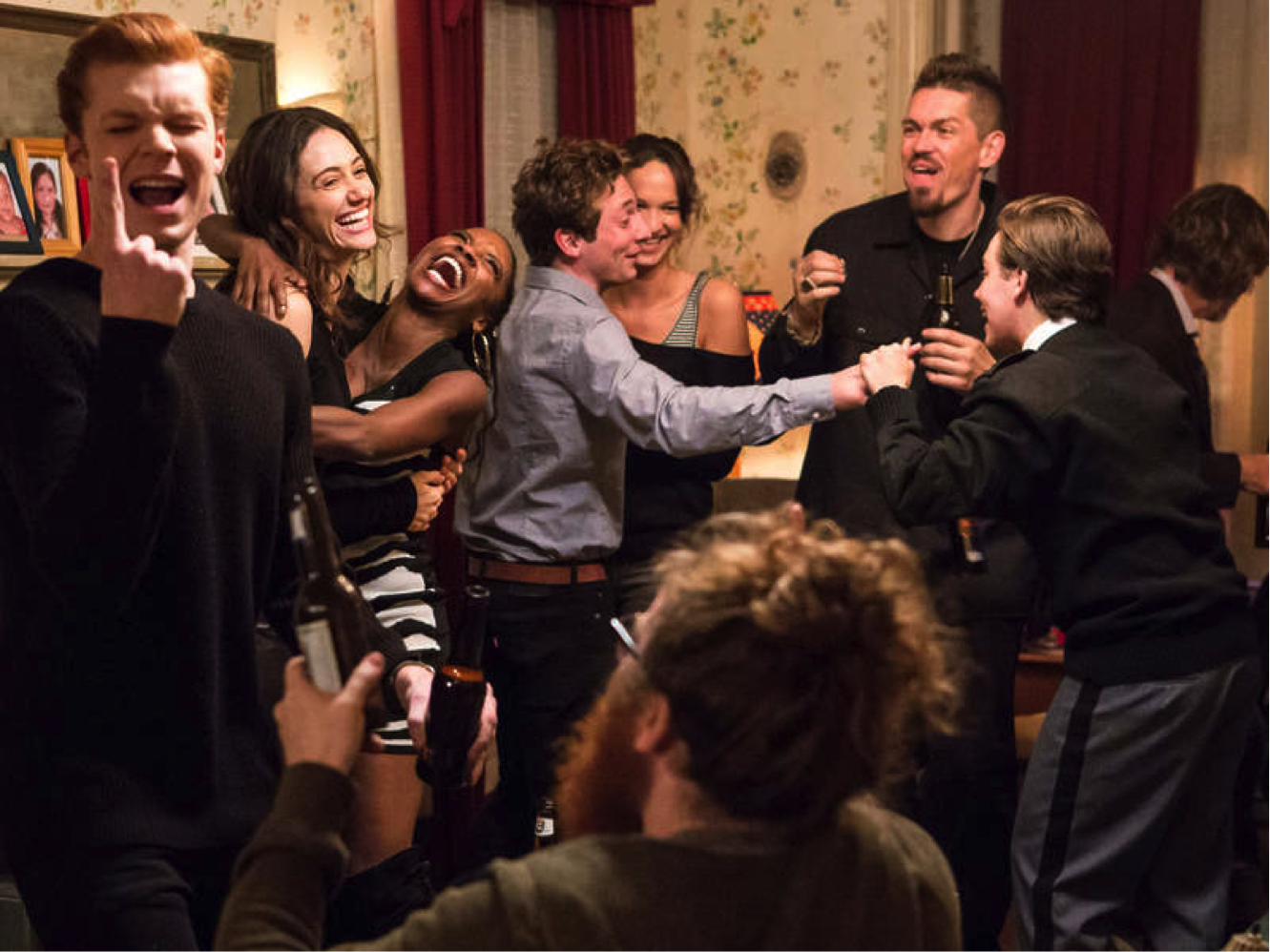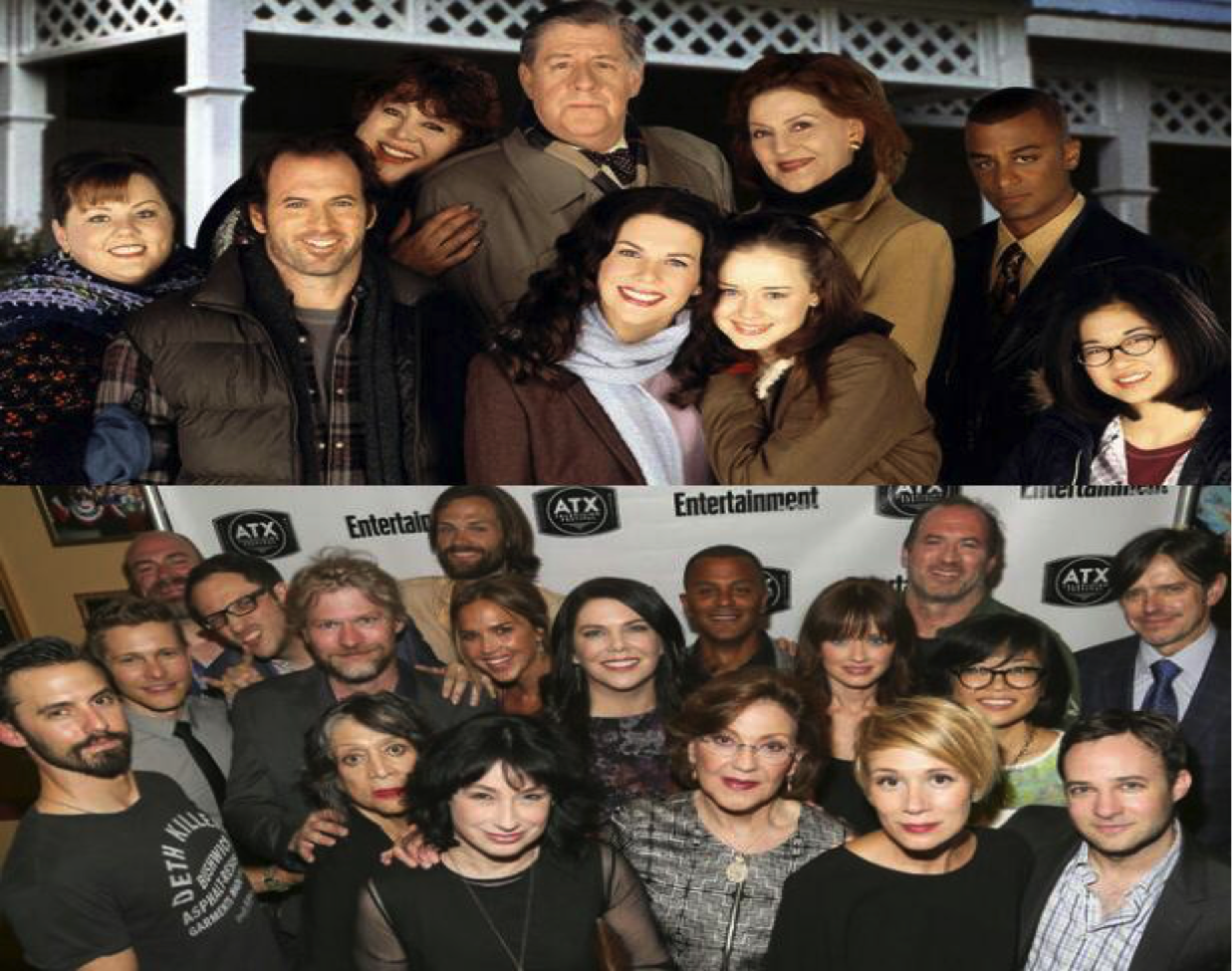"This Is Us" Series Unexpected Season One Finale
Over the course of six months, the new NBC series This Is Us has captivated audience’s hearts. The series tells the beautiful story that revolves around six individuals and how their lives connect as one family.
It is no surprise that the series was nominated for several awards, including screen actors guild awards and golden globe awards for best television series and best performances by an actress; This is Us has also won awards for the series’ overall quality from the People’s Choice Awards, the Writers Guild of America, the AFI awards, and more.
(Spoilers) As I sat down to watch the season one finale last week on March 14th, emotions were high. The previous episode had left off with the family patriarch, Jack Pearson, driving drunk on his way to make amends with his wife Rebecca. As most long-term audience members of This Is Us know, Jack faces an early death. His children are in their teens/early 20s when his passing occurs. But the "how" is still uncertain. Many expected this to be it, the big reveal of how Jack dies and the story behind his death.
Yet, pleasantly, the season finale of This Is Us did not end with a sorrow tone. Instead, there is hope and the promise of a future. These goals are not only shown through Jack and Rebecca, but a new possible life-altering avenue for Randall too. Randall proposes that he and his wife adopt a baby.
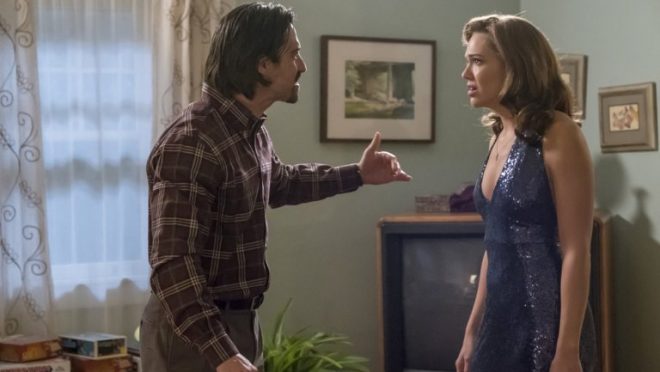
This decision allows the story to come full circle in a way. Randall's choice to adopt a child shows his understanding and appreciation for his parents on a new level. Randall realizes that although Rebecca didn’t make the best decisions when it came to Randall’s birth parents, she was always there for him 110%, and he believes that Rebecca did what she thought was best for Randall growing up. Although Randall didn’t get much time with his birth father, he understands how loved he was by William, Jack, and Rebecca. Randall, in turn, wants to give that same powerful love that he had with Jack and Rebecca to another child.
As for Jack and Rebecca, despite their hostile words exchanged with one another, they didn’t simply apologize. Although both felt guilt at the way the expressed their feelings, they both meant what they said. Rebecca even states this truth directly. Rebecca has sacrificed having something of her own, and her opportunity to have her “big break” as a singer was ruined by Jack who showed up drunk. She depicts herself as a house wife and a mother of teenage children who don’t need her anymore. Yet, Jack has visibly made sacrifices too; such as, asking his drunk abusive father for money, so Jack and Rebecca didn't have to move in with Rebecca's parents. But at the end of the day, Jack is fighting for his marriage with Rebecca. He is showing the lengths of his love for her, and that this is only the beginning of their story.
It is in this episode that we discover how Jack and Rebecca meet. It is a joyful revelation, rather than one filled with tragedy and pain. We, the audience, see how Rebecca saved Jack from acting out a really stupid plan; a plan that could have altered the course of his life and ruined his future. Rebecca was Jack’s “big break.”
Although many were anticipating the season finale to reveal the truth about Jack’s death, this episode gave audiences so much more in such a positive, uplifting way. It gives these characters time: time to mend, time to heal, and time to continue to build a life together with the ones that they love. The This Is Us season finale continues to tell the story of the Pearson family and their journey together.
Review: Big Little Lies Series Premiere
The newly premiered HBO series, Big Little Lies, centers around the lives of three mothers of first grade students. Although most of the parents are rich and have money, power, and status, no one’s life is perfect. The audience sees what really goes on behind closed doors. We see the struggles that each of these individuals face as mothers and as human beings.
At the beginning of the series, it is revealed that a significant member of the community, and the school that the children attend, has died at the fundraiser. However, a sense of mystery still remains, as the victim’s identity is not yet known.
There are moments throughout the episode that expose, or hint, the truth to the audience; the truth which is that these women’s lives aren’t perfect. This world that the adults of these children lead involve dark concepts, such as: murder, jealous, sex, abuse, alcohol. All of these ideals are in direct opposition to the morals children learn through there parents and teachers; this child-like innocence is paralleled by the outside world of the audience, who don’t see the real life complications that these women deal with in their own lives.
This world of the parents within their children’s elementary school community is depicted as “a vicious world of who can prove they have the most money.”
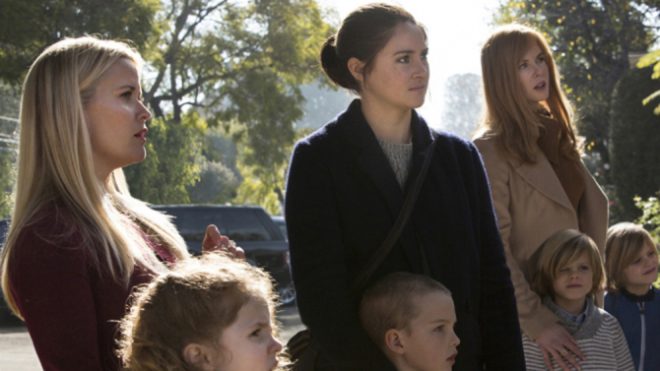
Madeline Martha MacKenzie, one of the lead characters played by Reese Witherspoon, is portrayed as preppy, pushy, and is in everyone’s business. Yet, despite having her nose in everyone’s business, she appears to have her head in the clouds. She doesn't seem to think before she speaks, or recognize the ramifications of certain actions; such as using the "f-bomb" in a children's play, or stating that emotional trauma and physical trauma are separate and don't coincide with one another.
However, Madeline recognizes that her children are slipping away from her; Madeline feels that she is loosing her children to her ex-huband and his new wife. Yet Madeline's actions show that she has her daughters best interests in mind. She tries to warn her oldest daughter, Abigail, about being a strong independent woman. She tells Abigail to use her opportunity to attend college, to be self-sufficient and not have to rely on others; an opportunity Madeline didn't have when she was a new, young mother. Abigail pushes her mother away at first, both physically and emotionally. Yet Abigail and Madeline have a moment that shows how they care for each other and that their mother-daughter bond can’t be broken. This struggle Madeline has with her children growing up shows her difficulty with the future.
Jane Chapman, portrayed by Shailene Woodley, is young, down to earth, and the mother of a boy in the first grade. Towards the beginning of the episode on the first day of school, Jane’s son Ziggy is accused of choking a little girl, Renata’s daughter Amabella. “That boy picked the wrong little girl to strangle,” one of the parents interviewed stated. This dialogue foreshadows how this event lead to a domino effect in the murder that eventually consumes the school. However, Jane believes that her son Ziggy didn’t hurt the little girl. She has faith and trust in her child. However, Jane may be hiding a secret of her own. The last clip shows Jane sleeping with a gun under her pillow. This image hints at the idea that Jane has a past, possible with her ex, Ziggy’s dad.
Celeste Wright, portrayed by Nicole Kidman, has two sons and a seemingly loving and passionate relationship with her younger husband. Yet, not all is as it appears to be. Celeste's husband is abusive, grabbing onto Celeste during an argument when she repeatedly tells him to let go; she pushes back and gets defensive during the altercation, as if this has happened before. Indications of abuse are also present during the beginning of the episode, when Celeste shares a moment with Jane. Jane depicts how in that moment, Jane is physically there, but mentally she is having an out of body experience. Jane’s reflection seems to resonate with Celeste, as she appears to be physically present but is seemingly mentally absent in certain scenes. Celeste’s current struggle takes place in the present.
Now that we have discussed the three main characters of the series, lets talk about the series as a whole.
In the first episode, there seems to be a bit of a separation between the story line and the characters. It almost appears as if these individuals and their stories are more significant than the overall story at hand. Yet, this separation also shows the split between the character’s lives that they lead outside of being a mom. This sense of disconnection highlights the real, raw emotions and conflicts that they each face in their lives.
Additionally, there is a theme of violence that runs throughout the first episode. From the abuse towards the little first grade girl Amabella to Celeste’s abusive husband, from Jane’s need to carry a gun to protect herself against someone, and most importantly, the murder. All of these potentially threatening physical situations lead to the murder, and provide support as to why the murder occurred.
Although all the pieces of the story seem separated, they all make perfect sense in the context of the story. We, the audience, can see the direction of the story’s trajectory in future episodes. The murder provides a strong tether to all the other pieces of the story, in addition to the character’s witness statements. All of these segments show how the story will come together and connect the characters and the story.
TV Review - Riverdale Premier
The series premiere of Riverdale, based off the 1940s comic book series Archie's Comics, features high school students and their day-to-day lives in the small community of Riverdale. However, just because the town of Riverdale is a confined neighborhood, doesn't mean that it's quiet.
The narrator in the series Riverdale presents the town as originally "wholesome and decent.”. However, deeper investigation into Riverdale shows that Jason Blossom’s death tainted that purity, and that with it the town changed. However, even before Jason’s death, Riverdale and it’s residents were filled with secrets. This world is much different than the people that make up Riverdale in the original comics, Archie’s comics. Archie Comics was established in 1939 by founders Maurice Coyne, John L Goldwater, and Louis Silberkleit.
The leading characters that appear in Archie’s comics are Archie Andrews, Betty Cooper, Jughead Jones, Veronica Lodge, Kevin Keller, Cheryl.
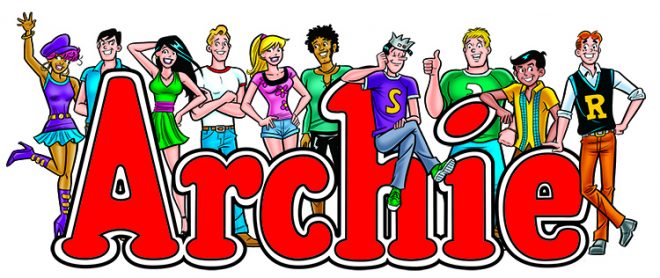
The series premiere of Riverdale starts with a dark beginning, the death of Cheryl Blossom’s twin, Jason Blossom. This grim twist presents dismal mood from the very beginning of the series. This tone is very different for Archie's comics fans, who may be comfortably familiar with the happy, up-beat tempo of Archie Comics and the characters within Riverdale.
With the tone completely altered, changes in the characters, and their personas and relationships with others also appear different from the comics.
Archie’s passion for writing music presents him as a 3 dimensional character who has passion and drive in his life. Archie is not just the typical teenage boy who is stuck between two girls, as he is viewed in Archie Comics.
Jughead Jones, who is depicted as Archie’s best friend in the comics, is the narrator. His grave, serious tone alter from the eating machine and “everybody’s pal” persona that Jughead’s character takes on in the comics. He is smart, and analytical, although Jughead Jones possesses certain analytical characteristics/qualities in the comics. Jughead is only heard, but rarely seen in the first episode. He’s a loner, unlike his persona in Archie’s comics where his role is as Archie’s best friend. Instead, Archie’s best friend in the series is Betty. Towards the end of the episode, they reveal that Jughead and Archie used to be best friends, but aren’t anymore; and that communication, or Archie’s lack of communication, lends a hand the demise of Archie and Jughead’s friendship.
Veronica arrives new to the town of Riverdale in the first episode, where no one really knows her. This, again, presents a difference from the already established persona Veronica takes on as the popular, rich girl at Riverdale high school.
Instead, depth is given to the character of Veronica in the Riverdale series. She is elegant and intelligent, even making a Truman Capote reference/joke to Archie when they first meet. Veronica breaks outside of the two dimensional character renders in Archie comics. In the comics, Veronica is simply a girl who loves to shopping and uses her wealth to get whatever she wants, including Archie.
Betty is intelligent, active and strong, similar to her portrayal in Archies comics. Many even deem her to be "perfect" in the series Riverdale. However, she has her weaknesses, namely her sister Polly and her lack of confidence in confronting others, namely Archie and Cheryl.
Betty and Archie aren’t together in the first episode; Archie's attraction to Veronica is immediately and powerful, barely even noticing Betty in the same way. This dissolves the love triangle concept between Betty, Archie, and Veronica in the comics. It also shows that strong women like Betty and Veronica wouldn't stand to be in a love triangle and fighting over Archie, or at least to the extend within the comics.
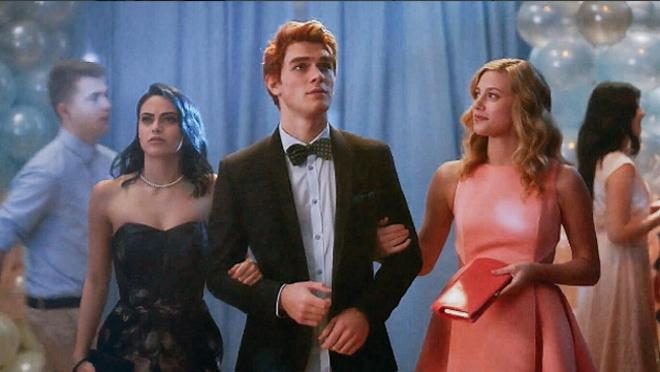
Betty’s mother plays a major role in the Riverdale story, all the parents do in some way. The parents all have a stake and a role in Riverdale, before their children’s stories. Namely, the parents feature Alice Cooper, Betty’s mother, Hermoine Lodge, Veronica’s mother, and Fred Andrews, Archie’s father. Even Hermoine’s husband/Veronica’s father and his reputation plays a role in Riverdale. Fred and Hermoine even have a past as “friends.”
Alice Cooper, Betty’s mother, portrays the obsessive and controlling parent. She continues to hate Jason Blossom even after his death. Alice continuously accuses and blames Jason for destroying her daughter Polly’s future and her subsequential mental breakdown and placement into a group home. However, although Jason hurt Polly, Betty states that it was their mother who broke Polly by disowning her. Similarly, Alice puts an extreme amount of pressure on Betty as a sophomore, scrutinizing her choices in academics and after school activities. Betty has a prescription for Adderall for her ADHD, which her mother refills for her. Although the audeince may perceive this action as Alice’s overbearing and dominating actions over her daughter, there is something deeper at work. Showing Betty’s ADHD medication adds depth to her character, that she isn’t as perfect as other people expect of her.
Cheryl Blossom, who faces the tragic loss of her brother’s death, feeds off of chaos, fear and intimidating others. Cheryl’s character takes a darker twist on her simple need for attention within the comics. She not only craves attention, she craves destruction.
Additionally, the character Josie also presents depth through diversity, in relation to the comics. Josie is black, along with the other members of Josie and the Pussycats. These racial and cultural elements, which differs from the comics, adds dimension to the series.
However, Kevin’s role is lacking in the series, compared to the comic books. He plyas the role of Betty’s gay best friend in Riverdale; where as in the comic books, Kevin has his own likes, and dislikes and his own persona as a character that stands out in Archie’s comics. This general characterization overview is also seen in Moose’s character, as well as Reggie’s character. In fact, Reggie plays Archie’s friend in Riverdale; this characterization of Reggie is very much the opposite, as he serves as an arch enemy of sorts in the comics, with Reggie's constant teasing and self obsession.
The language and demeanor of these characters is very typical of modern day high school and their roles. They are classified as popular, gay best friend, jock, musician, geek/scholar. Yet, they all have complexities within their individual characteristics that make them people, not categories in a high school’s social system.

Some of the biggest complexities presented in these characters are their confidence, character development, or their need to take action.
Archie’s sexual relationship with his teacher, Geraldine Grundy very different from the tone of Riverdale in the comics. It begs the questions, is it his relationship with his music teacher that drives Archie to music? The relationship between Archie and Geraldine fell out. Yet, they are still and forever bound by the sound of the gunshots that they witnessed on Fourth of July weekend, when Jason Blossom was found dead. Archie wants to come clean about what they heard. However, Ms. Grundy doesn’t want to face the backlash of reporting the shooting and jeopardizing her life as a teacher by admitting to having had relations with a students. This complex, darkened plot is VERY different from the comics.
Veronica shows her loyalty and stands up for Betty, who isn’t confident when face by Cheryl. Betty’s lack of confidence is in opposition to her portrayal in the comics, as strong and confident women. But in the real world, everyone has their weaknesses. Veronica’s speech about reckoning and that wealth doesn’t last originates from her personal experience. Veronica’s father’s demise lead to Veronica’s own reckoning, and the subsequent realization that she was like Cheryl. It also led her to the path of becoming a better person. Veronica states that she wants to use Riverdale as an opportunity to become “a better version" of herself. Veronica’s character development allows her to stand up for herself, as well as others for what is right. This progression comes after realizing her faults and the wrongs she has done to others in her past.
Veronica, again, stands up for Betty, using her confidence to give Betty what she is too scared to seek out; for example, becoming a cheerleader or asking Archie to the dance.
Betty, in turn, stands up for herself and stands up for Veronica as her friend. Betty tells her mother that she is always doing everything for everyone else. She's trying to obtain this perfect persona(s) for those who set her to an impossible standard. Now, it’s her turn to break away from her role of this “perfect” person in all aspects of her life. She finally takes the opportunity to act on what she wants.
This series presents complex qualities, such as: strength, confidence, maturity, growth and passion and desires that each characters have. These features add three dimensional characterizations to characters; rather than keeping them at bay with the one/two dimensional traits that the characters possessed as somewhat average teenagers in Archies comics.
Jason’s body washes up on the shore, with a bullet hole mark left on his forehead.
“Riverdale wasn’t the same town as before, it was a town of shadows and secrets now,” Jughead states at the end.
The series Riverdale presents the question: is this version of a dark Riverdale the aftermath of what Archie’s comics used to be? Is this town of secrets the result of what can happen when people’s desires complicate and change the dynamic? Or has Riverdale always been tainted with private affairs that are tucked away behind closed doors, even from Fred Andrews, Hermoine Lodge, and Alice Cooper’s era in Riverdale. Does the cycle simply repeat itself?
A Series of Unfortunate Events: A TV Series About a Series
The Series of Unfortunate Events, told by narrator Lemony Snickets, is a series of 13 novels that first released in 1999. On January 13, 2017, Netflix released the A Series of Unfortunate Events as a Netflix Original. Although there are over a dozen novels, the first season of the Netflix adaptation covers the first 4 books: Bad Beginnings, The Reptile Room, Wide Window, and Miserable Mill.
[iframe id="https://www.youtube.com/embed/MGhd6dpRy-w"]
I still vividly remember searching for and reading these books in my school library when I was in 5th grade. Although I remember seeing the movie version of this series, which covered the first three books, the movie franchise never continued. This left fans in the dust, only getting a taste of A Series of Unfortunate Events and on-screen vision, until January of 2017.
The scene opens with the three Baudelaire children, each of their characteristic qualities which are explained to the audience through the aid of narrator Lemony Snickets. The infamous villian, Count Olaf, soon enters the picture as he is the first stop on the Baudelaire guardian tour. It is immediately evident that Count Olaf's character has a narcissistic personality and selfish actions that follow in suite. However, Count Olaf's story is more complex than his relentless ploy to get his hands on the Baudelaire fortunate. A story, that by the end of the first season, the audience begins to realize a relationship between all of the characters who have appeared throughout the series. From Count Olaf to Montgomery Montgomery to Aunt Josephine, they are all connected. And there is more that lies deep under the surface.
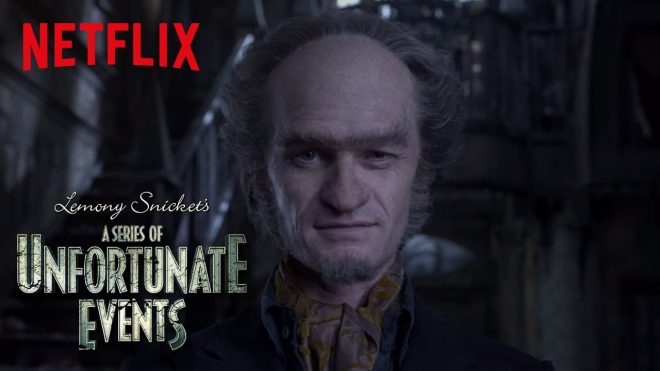
In relation to the novels, Netflix did a spectacular job of bringing this world to life. The visual aspects, such as the characters, the costume design and the set design, all are in perfect coordination with the books. But the effect the appearance has on the audience also, in turn, greatly effects the tone of the story. For example, playing with dark vs. light in the houses that represent joy and light for the Baudelaires; such as Justice Strauss' house and Montgomery Montgomery’s home. While Count Olaf’s residence and Aunt Josephine’s eerie home are very dark, dull and lifeless. This represents how viewers picture these characters that serve as the host(s) of the house.
Lemony Snickets, the narrator in A Series of Unfortunate Events, is front and center in many of the scenes. He explains and foreshadows what is to come for the Baudelaire children, as a narrator typically does in a story. But it is unusual to see the narrator so often and up-close in the world of television and movies.
Incorporating the narrator into the on-screen adaptation of A Series of Unfortunate Events is essential. Not only does the narrator’s presence maintain the original story and how the audience received character and plot information; but the very idea of Lemony Snickets was also created as a fantastic figment by the author. We see the author’s internal thoughts coming alive from the book to its on-screen translation. Through the aid of Lemony Snickets, the audience can almost see the author’s presence (Bad Beginnings part 1).
One of the most notable qualities of A Series of Unfortunate Events is the story’s use of irony. The dark and twisted irony is a literary rarity not typically found among children's books.
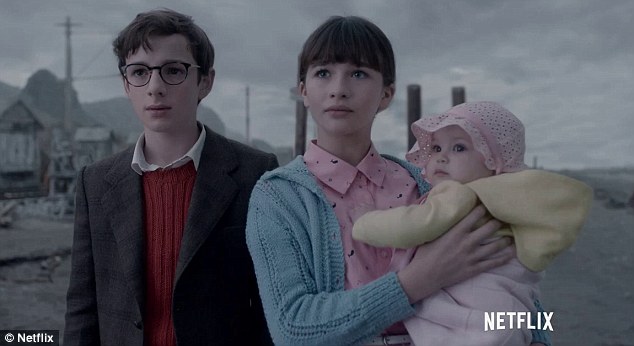
In Reptile Room part 1, Lemony Snickets defines and explains the meaning of dramatic irony. As adults, we know what this is and can pick up on it. But as children, the explanation of this word and its context in a children’s book is important to reinforce. This is one facet that depicts how the creators refused to change the nature of the story and how it is told, even if the audience is older. The essence of A Series of Unfortunate Events and how the creator portray the on-screen story remains true to the book.
Despite the awful or “unfortunate” series of events that unfolds, a strange sense of humor persists in the face of these hapless occurrences (Bad Beginnings part 1).
The use of irony in the series becomes even more blatant, if that’s possible, in Wide Window. For instance, the town of Paltryville's name is originally titled as a misnomer (paltry meaning small or meager). The town was vivid and lively, but eventually became paltry due to environmental factors.
Another great example of irony in this series is Aunt Josephine. She seemingly has a phobia of everything under the sun. She believes everything poses a threat and that she, and those around her, are in constant danger. Yet, Aunt Josephine’s character chooses to live in a house hanging at the edge of a 300 foot drop, with a lake below that contains lachrymose leeches. However, ironically, Aunt Josephine’s fear of “real estate” super-cedes her fear of living in the dangerously structured and located house. Her irrational fear trumps what should be a rational fear. Two concepts, rational and irrational fears, which are defined by Lemony Snickets.
A Series of Unfortunate Events is also memorable for using great examples of literature. This strategy not only teaches children of these praiseworthy authors and novels. But Lemony Snickets also uses these books and/or figures to help get his point across and to create understanding in a humorous manner.
For instance, he describes the expression “out of the woods” in Miserable Mill part 1. Lemony Snickets depicts the saying as almost away from threatening danger. The narrator explains that that woods are often perceived as dangerous places to be, as shown fables/stories of fiction, such as Hanzel and Gretle, or Little Red Ridding Hood. Following the comparison of children’s tales, the narrator uses the great work of literature Walden, as another example. Although some may not be familiar with this reference, the humor is in the simple nature of tall tales versus the complexities of transcendentalist Henry David Thoreau.
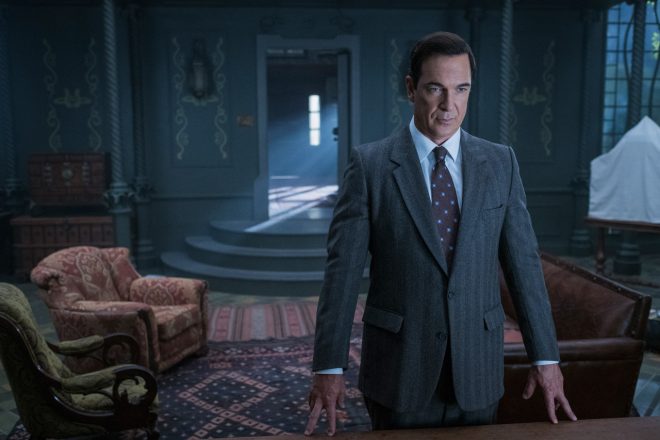
The next example shows Klaus when he spots a sign in the shape of a pair of eyeglasses hanging over the entrance of the optometrist office. “In The Great Gatsby, there’s a famous sign shaped like a pair of eyeglasses. It represents the eyes of God staring down and judging society as a moral wasteland,” Klaus said.
“That sounds like a fun book,” Phil the lumber mill worker replied.
Even for those who don’t inherently understand the reference, this example of literature presents a sense of complexity (or complex works) paired with a lighthearted comical response. Additionally, the idea of the "moral wasteland" and the destitute and greedy nature that continuously pursues wealth is a concept depicted shown throughout the A Series of Unfortunate Events, namely seen in Count Olaf and Sir and the miserable mill.
As previously mentioned, foreshadowing is another major component that is often employed throughout A Series of Unfortunate Events. Lemony Snickets directly states that unfortunate events will follow, which is unknown to everyone accept the narrator in this case. Lemony Snickets foreshadows many of the unfortunate occurrences. For example, Montgomery Montgomery’s death and how the children would be on their own again soon. Or the Baudelaire children, who were not “out of the woods yet, they were far from it.”. This line vaguely hints at the unfortunate events that the children soon would face in the next chapter of their story.
However, foreshadowing isn’t an exclusive product of Lemony Snickets. The character Sir foreshadows that the Baudelaires didn’t actually set the fire, as accused. However, Sir only hints at this truth without explanation when he speaks to his co-worker, Charles, who knows the situation and does not need explanation. Yet, this lack of elaboration leaves those unknowing, such as Violet and the audience, hanging in the balance with questions (Miserable Mill, part 1).
In Miserable Mill, part 2, Lemony Snickets presents the concept of black and white. The narrator is shown visually in a black and white on-screen performance. He explains that looking at things 'in black and white' is "oversimplified and often incorrect.” There isn’t simply good and evil, or right or wrong, or fact and fiction in this world. There is always a spectrum and there are always new details to uncover. Even in the Baudelaire’s fictional world, the lines are always blurred. The grey isn’t depicted or explained.
Another brilliant literary strategy that this novel/on-screen adaptation uses is satire. This narrative technique shows the intelligence of children versus adults and how this discrepancy is viewed in society. Mr. Poe’s constant word explanations to the children, from the beginning, shows his ignorance for children as intelligent human beings. This is an important lesson - or rather realization - to understand, not only for children, but for adults as well. Adults often have this misconception that children are mentally naive, that they couldn’t possibly understand the complexities of science, or literature, or the world around them. In this story, the roles reverse and it is the adult characters in the story (namely Mr. Poe) who are actually the ones who can’t comprehend the situation(s) at hand.
At the end of the season’s final episode, there's a parallel present between the Baudelaire children and the Quagmire children. Violet and Klaus sit on one side of the bench while the Quagmire children sit on the other side. Each clan, the Baudelaire’s and the Quagmire’s, holds one half of the broken spy glass. The Quagmire’s house set fire, as did the Baudelaire’s mansion. The Quagmire’s parents were in the picture that Klaus possesses from his Aunt Josephine; a picture that also shows the Baudelaire’s parents in the photo (as confirmed by Aunt Josephine and Klaus in Wide Window, part 2). This constant mirror image between these two families is something to take note of. The two share a connection.
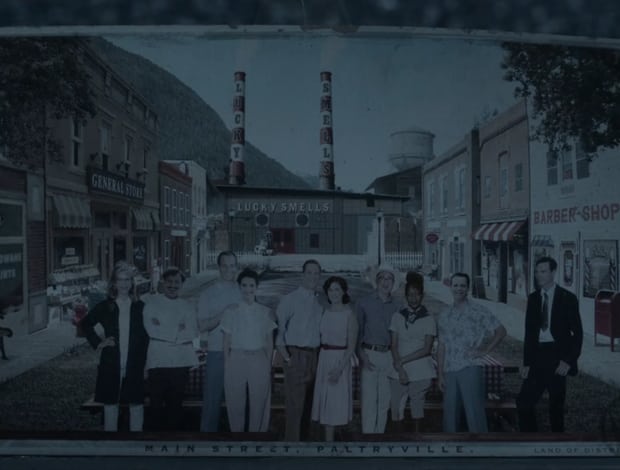
Towards the end of the season, Violet asks Klaus about a quote Samuel Beckett once said.
“I can’t go on, I’ll go on,” Klaus responded.
“Lets go on together,” Violet said.
This moment continues the ironic tone that is present throughout the series. The series employs irony in a way that wraps up the story. It also shows that the Baudelaire children will keep pushing through. Despite the obstacles and the feeling that all of these unfortunate events are unbearable, the keep moving forward. They still continue to go on.
Emerald City: No typical Dorothy and Toto story
NBC’s original series "Emerald City” is not the typical story of Dorothy Gale who falls into the land of Oz with her faithful dog toto in an attempt to find good before evil reaches her.
Although there are many variations in Emerald City from the original L. Frank Baum stories, a few differences to highlight include the following. Dorothy appears older than the 20 year old girl portrayed in the books, and has established herself in her career as a nurse. Dorothy and her Aunty Em and Uncle Henry have Hispanic roots, as they shift between speaking English and Spanish to each other. The Munchkins, called the “Munjacan Village” also has their own culture native to their tribe.
The story of the witches is one of the biggest differences. In the pilot, the Witch of the West isn’t necessarily viewed as wicked. West gives off a sort of hippy personality in the beginning. Shw states that there is "too much love" to still have. West also appears to be very fragile, more concerned with emotions than with power.
Additionally, the witch Glinda is emotionally distraught over the death of her sister, the witch of the East, which deviates from the original tale. The only two witches that remain now are Glinda, the Witch of the North, and West. In the television series, the witch of the South is killed by a "beast” before the series begins. In Emerald City, this view of the witches presents a sisterhood of a coven of witches; rather than good witches attempting to defeat evil magic that “bad” witches possess.
Apart from the comparison to the original story, here are some highlights from NBC’s Emerald City. The pacing seemed appropriate for telling a story of this magnitude, with a story most of us already know. A story that many of us know and love, any characters that stand out on their own against the original story need to be explained in detail. I believe this was accomplished in the pilot of Emerald City.
The blurred line between good and evil among the witches and the Wizard of Oz presented an interesting theme. Everyone has their limits and everyone’s morality is placed on a spectrum.
Emerald City shows the reality of what it is like to be trapped in a foreign place, even if that foreign place appears to be in your own mind. This concept of the mind is shown through examples such as Dorothy and the Scarecrow, Lucas. Dorothy uses her cleverness and cunning edge of her modern tricks to kill the witch of the East.
Additionally, it is a clever idea to use the scarecrow’s memory loss, originating from Baum's stories in which the scarecrow “doesn’t have a brain." The scarecrow, also known as Lucas in Emerald City, implicates his possible identity through the violent actions that he takes. This is a great example of revealing a piece of the character that is not only to the audience; but also a discovery to the other characters in the story and even himself.
Tip’s story, a featured character in Emerald City, actually emanates from one of Wizard of Oz author L. Frank Baum's original stories, “The Marvelous Land of Oz.” By incorporating this piece of Baum’s vision, the story adds more than the two dimensional view of Dorothy, the witches, and the Wizard of Oz’s perspectives.
The story of Emerald City presents an interesting premise of making this world it's own, rather than a re-telling of the original story. However, the story seemed to fall flat.
The story’s ability to grab the audience’s attention was average. The two hour special seemed to drag on. The focus on Dorothy’s mission is put on the back burner. There is a constant shift and division of the characters in the scenes in the first episode.
The plot twist at the end of the pilot is a concept originally presented in Baum's “The Marvelous Land of Oz.” However, using this revelation to shock the audience at the end seems like a cheap way to bait viewers. The creator's vision seems to be focus on audience appeal, rather than focusing on telling this story over time. Additionally, hinting at an intimate connection between the scarecrow and Dorothy distorts the nature of the original story in an attempt to draw viewers in. Especially considering this happened so early in the show’s establishment.
Overall, Emerald City’s pilot is not comparable to the original film adaptation of the Wizard of Oz. However, this mature version of the story highlights some of the original content used in Wizard of Oz author L. Frank Baum’s stories. Viewers shouldn't expect Emerald City to be the same story of Dorothy Gale and the journey she takes to Oz. This is not the same story you grew up watching on a black and white screen transformed into color. Yet, because this story emanates from the original book series The Wizard of Oz, it's difficult to imagine anything different.
Television: The Transition Into Online Streaming
Online streaming has greatly impacted the world of television over the past 10 years.
The majority of television shows still continues to expand over the course of months, with weekly episodes. Yet platforms such as Netflix, Hulu, Xfinity TV, HBO Now, Amazon and even YouTube have changed the game for television. Among this list also includes television networks that have created online websites which viewers can access and stream tv shows. These companies allow viewers to binge watch entire seasons of episodes on their own time. This concept is known as binge watching, or the binge watching culture, which we have adapted into our society.
Two of the most well-known platforms that allow access to online streaming include Hulu and Netflix. Hulu was established in March of 2007, while Netflix was first founded in August of 1997. During the late 1990s and early 2000s in it's formative years, Netflix was originally created to rent movies on DVD. By 2007, Netflix moved into online streaming. In the 2010s, Netflix grew into a network, airing original content and television series. The network began hosting it's own series in early 2013, with the first Netflix original House of Cards. Now, even YouTube hosts their own original television series that consumers have access to with a subscription to Youtube Red.

Access to binge watching allows audience members the privilege of catching up on their favorite shows if they fall behind. Viewers also have the option to watch multiple episodes if available on programing sites such as Netflix or Hulu.
I remember growing up, sitting down at 4 o’clock on the dot to watch Full House or Gilmore Girls. As a teen, I recall watching whatever was on MTV, even if I wasn't interested in the program. MTV established one of the few channels that offered programs free from infomercials at 2:30 a.m. It kept viewers mildly entertained, namely audience members in their teens and early 20s during. This period of the early 2000s was before the convenience of Netflix and Hulu became available through devices such as laptops and iPads.
Now, individuals have the ability to access their favorite shows anytime, day or night, at the cost of $7 per month. This also offers economic benefits as well as convenience, providing viewers with a cheaper option than cable packages.
This new age of binge watching questions whether there is a loss of climatic build-up for viewers. Could the lack of on-screen suspense be the result of having access to watch a whole season any time the individual chooses? Audience members can now set their own pace, establishing a sense of control while watching their favorite shows.
However, this new age of total access to constantly watch our favorite programs also brings into question the quantity of television produced.
Is there a greater need to produce more because viewers have accessibility to watch more? How many television shows are produced now compared to 30 years ago? Reports state that television networks such as HBO and MTV aimed to diversify their programming during the 1990s. HBO, also known as home box office, originally intended to offer movies exclusively to viewers. Their aim was to provide individuals with the appeal of a home theater. Similarly, MTV, known as music television, also produced one type of content during the network’s establishment: music videos. MTV strictly aired music videos 24 hours a day, 7 days a week. It was the primary content and intent of the network’s programing that monopolized the 1980s.
One example of a booming area in television that continues to produce numerous shows is the crime/investigative genre in television. Some examples of crime-related television shows originating over the past 20 years that sustains programming with new episodes include: The Blacklist, Blue Bloods, Bones, Criminal Minds, Chicago P.D., NCIS, NCIS: Los Angeles, NCIS: New Orleans, Hawaii Five-O, Law and Order: SVU.

However, according to britannica.com, the criminal genre in television was considered to be inappropriate at the time. During the 1990s, NYPD Blue received criticism by adult figures.
“Parents, teachers, and religious groups complained that network television was no longer appropriate for family viewing. This became a major on-going refrain in the 1990s.”
At that point, television was evolving. The shared, family-friendly experience that television originally intended to be during the 1940s and 1950s was changing.
Networks welcomed the diversification of programming and television content. As a result, viewers could see the real, raw words and actions that mimic the world around us. Television is no longer set in this dream land that falsely portrayed perfect lives, as seen in the Cleaver clan and the Anderson family.
Now, the diversification of television is shown through its platforms in addition to its content.
The accessibility and convenience of online streaming is a privilege that we just can't deny.
Shameless Season 7 Wrap-Up
This past Sunday, on December 18th, Shameless wrapped their season 7 finale. Throughout the season, we, the audience, see each character’s highs and lows, both individually as well as collectively as a family.
Frank:
- In season 7, Frank’s world is shaken again by the return of Monica, his wife that has abandoned him and his children over and over again. However, this time, Monica explains to Frank that she is dying. At the end of season 7 episode 11 and into episode 12, Monica passes away in Frank’s arms. From the announcement of Monica’s death at the hospital to Monica’s funeral, each scene shows Frank love and devotion to Monica. As many times as Monica screwed Frank over, he still welcomed her back every time because he truly loved her. Frank’s speech at Monica's funeral puts things into perspective for the Gallagher children. “I know you didn’t think much of her, but she loved you. You wouldn’t be who you are and I wouldn’t be who I am if she didn’t come into our lives. So, hate her if you want. But she’s in you. And that’s a good thing,” Frank says. Frank’s speech shows Fiona, Lip, Ian, Debbie and Carl that in her own messed up way, Monica really did love her children.
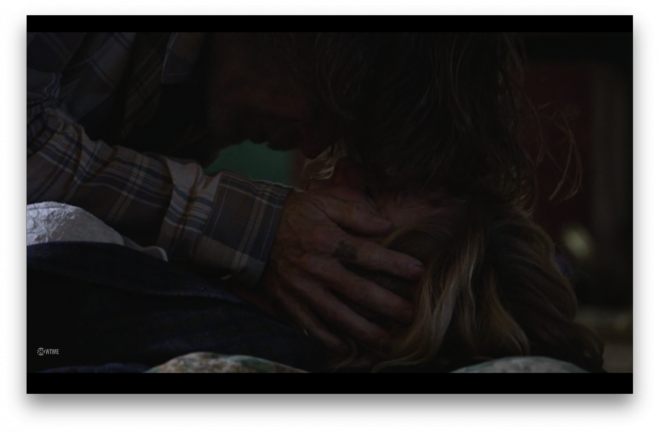
Fiona:
- In season 7, Fiona is establishing herself as a business woman and aspiring to become a property owner, to own something that is hers. Throughout the season, we see Fiona make some tough decisions in putting her foot down. She refuses to continue to take care of her family members problems before her own anymore. Fiona gives up the first property that she owned, the laundry-mat, for the money. As a result, she starts to make business decisions first rather than considering the choices that affect her friends and family. One example of this is Etta, a local who used to own the laundry-mat in town. Fiona promised to buy the laundry-mat and to let Etta live in the apartment upstairs. However, Fiona takes the $160,000 offered to her and turns her back on Etta, putting her into assisted living.
- However, Fiona’s denial to sell the $10,000 worth of drugs left to her by her mother shows her moral line when it comes to making money. She is no longer scraping to get by, she has a plan for herself and for her future that will allow her to prosper. Fiona isn’t simply buying properties out of money or greed. She wants to be successful, and she is willing to make some difficult decisions in order to get there.
- Near the end of the episode, Fiona also reveals her feelings about her mother after Monica's death. “She didn’t love any of us. She didn’t give a shit about anyone but herself,” Fiona said. “I’m glad she’s dead, at least she can’t fuck us over any more.” This scene, along with the scene where Fiona is left alone with her deceased mother, reveals how Fiona felt about Monica at the end of their relationship. Fiona hits Monica dead body in the pit of her stomach, the same pain Fiona felt for so many years being abandoned by her parents time and time again and having to take care of each of her siblings as if they were her own children.
- Fiona and each of the Gallagher children that she raised into the strong, ambitious characters that they are will no longer be undermined or disturbed by Monica’s words or actions.
Lip:
- In season 7, we see Lip’s struggle with alcoholism and addiction. Towards the end of the season 7 finale, Lip says, “I think I really fucked it all up.” Lip believes that it may be too hard to start over. But with encouragement, he realizes that he is surrounded by people who love him and believe in him. From friends and family, to someone he hasn’t known for more than a few weeks, they all encourage him. They support Lip, telling him that he can stay sober, that he can go back to school, that he can still have the future that he deserves.
Ian:
- In season 7, Ian attempts to get his life together. He searches for a stable, healthy relationship, and works hard to establish a career path that he loves. Ian finds that in helping people, working as an EMT. However, towards the end of season 7, Mickey comes back into Ian’s life. Ian initially choose Mickey and the passion that they have together over a stable life. However, he soon realizes that this life style that him and Mickey shared together, running away from their problems and living in the moment rather than planning for the future, that this isn’t Ian’s life anymore. Ian knows that he needs stability. Despite Ian's love for Mickey, Ian makes the decision to leave him for the sake of his own life. In one of the final scenes, Ian goes to the boarder patrol location to watch Mickey, making sure that he passes through safely. Although Ian tells Mickey he loves him before he leaves him, his actions of making sure Mickey is safe shows the extent of how much Ian really loves Mickey. Similar to Fiona’s situation, Ian has to make challenging decisions, even if it means letting something or someone you love go.
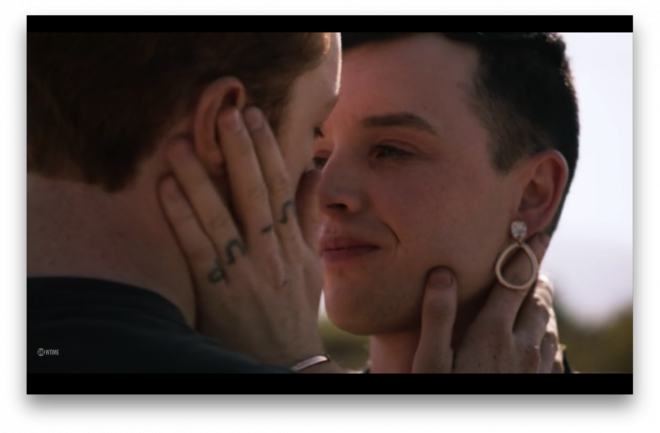
Debbie:
- In season 7, the audience sees the aftermath of Debbie’s highs and lows and her struggles as a single mother. Debbie has figured out a plan for herself, marrying Neil, finding a home, plans of attending welding school. She plans to establish a career for herself; rather than just marrying someone who has money or getting by with a part-time job. Debbie is doing what she has to do for the sake of her child. It shows her progression as a character and as someone responsible for another life.
Carl:
- In season 7, Carl chooses to leave the South Side and attend military school. Carl has always been there for his family, even though he has made terrible decisions. But the affect of military school has seemingly taught Carl to have respect for his family and those around him. An example of this is when Carl picks up groceries for his family on his way home from military school. This simple act displays his thought and consideration for his family in a new light. But the reason's behind his choice to attend military school are greater. Carl’s decision allows him to create a future for himself that is better than the environment he was forced into. Growing up, Carl served as Frank's right hand man, helping Frank in whatever scheme he has plotted. At the end, Carl helps his father one last time, giving tribute to his mother with an old activity (tagging). Carl is the youngest of the Gallagher siblings, with the exception of Liam, who is able to comprehend what is going on. He is able to make his own decisions. Yet, Carl's sense of devotion and loyalty in supporting his family members, towards even his addiction driven parents who abandoned him over and over, is still strongly in tact.
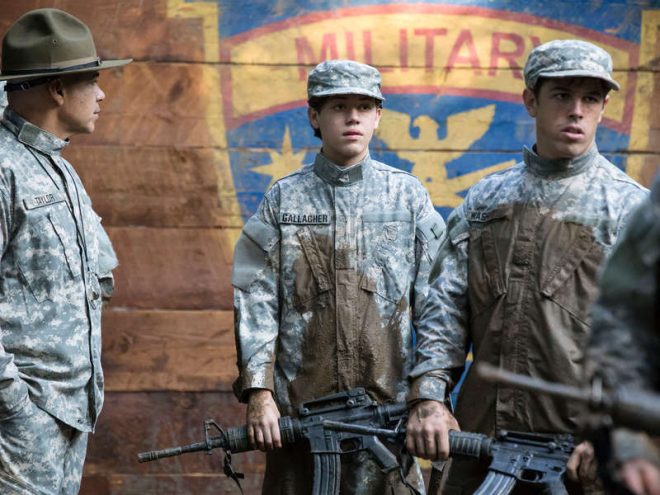
At the end of season 7, the closing scenes highlight each of the Gallagher children who are no longer children. They are, or are becoming, adults. Each of them are planning for their futures and how they are going to do better and be better than their parents, despite the obstacles put in front of them.
- Debbie is attending welding school classes.
- Ian returns to his job as an EMT
- Lip continues to go to AA meetings for his alcoholism
- Fiona takes the apartment complex building and starts her career as an owner of a property
- Carl is devoted to military school
In past season finales, there have been small moments. Moment of closure or defeat or conquer for certain characters, or a dramatic cliff hanger that left the audience waiting. But in the season 7 finale, everyone had their own moment of closure after Monica’s death. Monica’s death shows how each Gallagher faces the loss of someone who was never really there for them; but it also provides them each with something greater. The season finale's ending shows each of the Gallagher’s creating and planning for their futures, something Frank and Monica could never grasp.
Why Gilmore Girls Ended Exactly As It Should Have
After waiting nearly 10 years, the Gilmore Girls have finally returned to the small screen and the town of Starts Hollow, and there is a lot to be said about the revival.
Winter
The return of Gilmore Girls is divided into four seasons, starting with Lorelai’s favorite: Winter. Throughout this first episode, the audience views how Emily, Lorelai and Rory cope with the death of Richard and how their grief impacts them in different ways as a wife, a daughter, and a granddaughter.
[youtube id="oTKD7JOMXHs"]
Emily begins to wonder who she is and what brings her joy in life in a world without Richard.
Lorelai is also starting to struggling after a confrontation with Emily. Lorelai begins to question whether her mother was right. Is she is being selfish and compartmentalizing pieces in her relationship with Luke?
Spring
In the season Spring, we see Rory starting to struggle in her own way, grasping to find her identity within her career. Her studies and her career have always come first for Rory, with intimate relationships coming in second. Rory is questioning which direction she want to follow as a journalist.
Rory's unstable situation in her work life is paralleled in her love life, establishing a no-strings relationship with Logan Huntzberger. Logan has always represented fun and a freedom for Rory. However, it becomes apparent that this roaming free lifestyle in Rory’s work life and personal life isn’t something she can sustain forever.
Lorelai and Emily are seeing a therapist together, which is a major break for these two characters who have never been mediated together. This opportunity gives them the chance to mend their issues in the tense relationship that has build up over years.
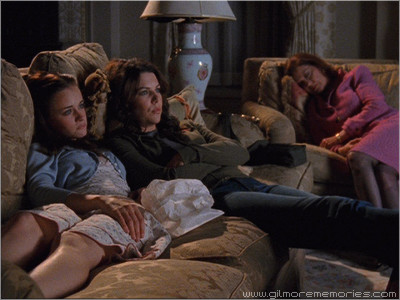
Summer
In the Summer season, Rory steps up and decides that she is going to save the Stars Hollow Gazette, taking on the role of editor. She is ready to use her skills and education to benefit the town, and to keep a historical piece of Stars Hollow alive. The Stars Hollow Gazette has also helped to inform and shape Rory herself into the person she is today. Rory recognizes this and makes it her responsibility to return the favor.
Lorelai also worries about the structure of her career. She has lost Sookie as a chef and can’t find anyone who is up to Lorelai’s standards to replace her. Now, in the season of Summer, Lorelai faces the potential dilemma that Michel may be leaving. She fears that the team that was the foundation of her business seems to be falling apart.
Jess returns to Stars Hallow and it is evident that he is able to maintain his friendship with Rory. His advice helps to shine a light on a situation she couldn’t see herself. He provides her with insight on her career and what direction she should consider taking. Jess suggests that Rory write a book, about her and her mom and their life together.
However, Rory’s decision to pursue the book idea causes a divide between Rory and Lorelai. Lorelai has always tried to maintain her private life and keep her relationships separate; whether it was her distancing herself and Rory from Lorelai’s parents, or Lorelai keeping the men in her life at arms length from Rory growing up. It always seemed as if it was her intention to protect Rory.
Yet, Lorelai is also trying to protect herself. This parallel is also shown in Luke and Lorelai’s relationship strains. Luke claims that Lorelai has always called the shots in their relationship. The only option Lorelai has now is to take a break and to embark on a journey alone to figure out how she feels and what she wants.
Fall
During the final season of the four part series, Fall, the issue of communication arises. Jess addresses the situation between Luke and Lorelai and communication withinin their relationship. Through this, Luke comes to the realization that he may lose Lorelai.
This is not only a significant moment for Luke, but for Jess as well. Here, we see Jess’ progress in the communication department in his adult life. This is essential and allows him to break down the barriers he put up. It allows Jess to establish true friendships with Rory and Luke, people he once pushed away, and to even help them.
Logan, Collin, Robert, and Finn also return to Stars Hollow. With them, they bring back that sense of fun and freedom that they provided Rory with during her college years. They allow her to take a break from the seriousness and the stress of life and to just enjoy the stupid stunts that can make living in the moment fun. But the fun has to end at some point.
Finally, Rory runs into Dean, her first love. Her depiction of him as her first boyfriend is so important. It shows how Dean has impacted Rory's life, regardless of fans who don't approve of Dean. Rory highlights how he taught her what safety felt like, a valuable lesson she needed in her life. Rory claims that she’s glad they met when they did because she wouldn’t be the person she is today. This is a great example that shows how the people of Stars Hollow - from The Stars Hollow Gazette, to Dean, to Lorelai - have greatly shaped Rory’s life.
In a moment of clarity, Lorelai is finally able to reflect on the one instance that stood out to her about Richard. This scene finally gives Lorelai a sense of insight, understanding and closure to Lorelai’s relationship with her father. She is now starting to embrace the journey of coping through seeing her father more clearly now after he is gone.
When Lorelai returns to Stars Hallow, Luke lays it all out on the table for her. He is willing to sacrifice anything for her, telling her she can’t leave, that he needs her most of all. Lorelai responds by asking Luke to marry her. This idea of marriage has been a uneasy subject for the two and their history together. But it is this point in Lorelai and Luke’s relationship shows how valuable and meaningful time and patience are. “It needs to fit,” Lorelai states at the end.
Lorelai's complications with her work life also receive a sense of closure when Sookie returns. It shows that Lorelai, Sookie and Michel’s relationship with one another hasn’t changed. Even if they aren’t working together anymore, their bond displays how their business was always made from the foundation of friendship; and how that friendship intertwined with creating a business.
Rory eventually returns to Lorelai on her own terms. She doesn’t apologize for the book idea, because it is something she believes in and wants so desperately. Instead, Rory offers Lorelai a proposal. This scene displays exactly how Rory’s relationship with her mother is more important than her career. And in that moment, we the audience, realize that Rory’s relationship with her mother has always and will always be the number one, most important thing in her life.
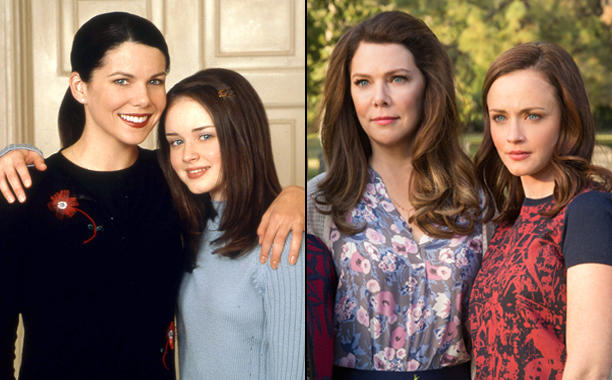
Even Christopher, Rory’s father, knows that Lorelai’s relationship with Rory is exactly the way it was supposed to happen. "From the first moment I saw you two, I knew no one was getting between you two,” he says. Rory is no longer the 16 year old girl who so desperately wants her parents to be together. Rory finally understands that her relationship with her mother is more special and more important than her parents being together.
Emily comes upon her own realizations and the need for changes. She makes the decision to sell her and Richard’s home. Emily is finding who she is and who she wants to be after the loss of Richard. She finds her passions and pursues them and accepts and embraces the changes that comes with that. It is interesting to see a character who is so against change welcome it into their life. Emily not only supports the idea of change, but she needs it. Change helps Emily to keep living her life and not let "it die with Richard."
Towards the end, Lorelai tells Rory that she is not going to read Rory’s book until it is complete. By allowing Rory to follow through with her passions, this act displays the trust Lorelai has in Rory as a daughter and as a friend to write their story with honor, integrity and truth.
Finally, the final four words the creator Amy Sherman-Palladino are released into the world:
Rory: “Mom?"
Lorelai: “Yeah.”
Rory: “I'm pregnant.”
Similar to Lorelai situation when she was pregnant with Rory, Rory is now pregnant. She isn’t married, nor does she have the support of a partner. But she has something that Lorelai never had: the unconditional and full support of a mother. A mother who will help her get through this pregnancy and to help raise this child, if that is what Rory chooses to do.
Gilmore Girls always focused on the mother-daughter relationship between Lorelai and Rory. Their bond, their friendship, and their little family was always what the story was about. Rory’s decision to re-tell that story in the past through the present is deeply meaningful to these two characters and their journeys, both together and apart. But the potential to continue that story with Rory's child allows the Gilmore Girls story to come full circle while still continuing on their journey together.
In addition to the amazing job of the writers in the Gilmore Girls revival, it is extraordinarily commendable how these actors brought life back to these beloved characters. Lauren Graham returns as Lorelai, seemingly without even missing a beat. It is as if the fast talking, quick witted, bantering coffee addict never left. The growth and relationship between the characters and how these scenes were carried out is truly admirable. The banter between Lorelai and Rory seems natural, as if you can see Rory becoming more and more like her mother in her witty manner of speaking between the duo.
Although there was a scene or two there that may have been shortened, such as the 10 minute scene devoted to the Stars Hollow musical, it all great impacted the story. To some viewers, there were scenes that may seem less important or may even be deemed as 'skip-able'. But it is important to remember that every scene that involves the people of Stars Hollow is essential. These scenes bring back that same life and rhythm by the people of Stars Hollow. It brings back the same feelings to a show that began 15 years ago. But this story isn’t just about Lorelai and Rory. It is all the characters that were brought to life and made the show the great story that it is; and the great story that it will be as Rory’s book, Gilmore Girls.

